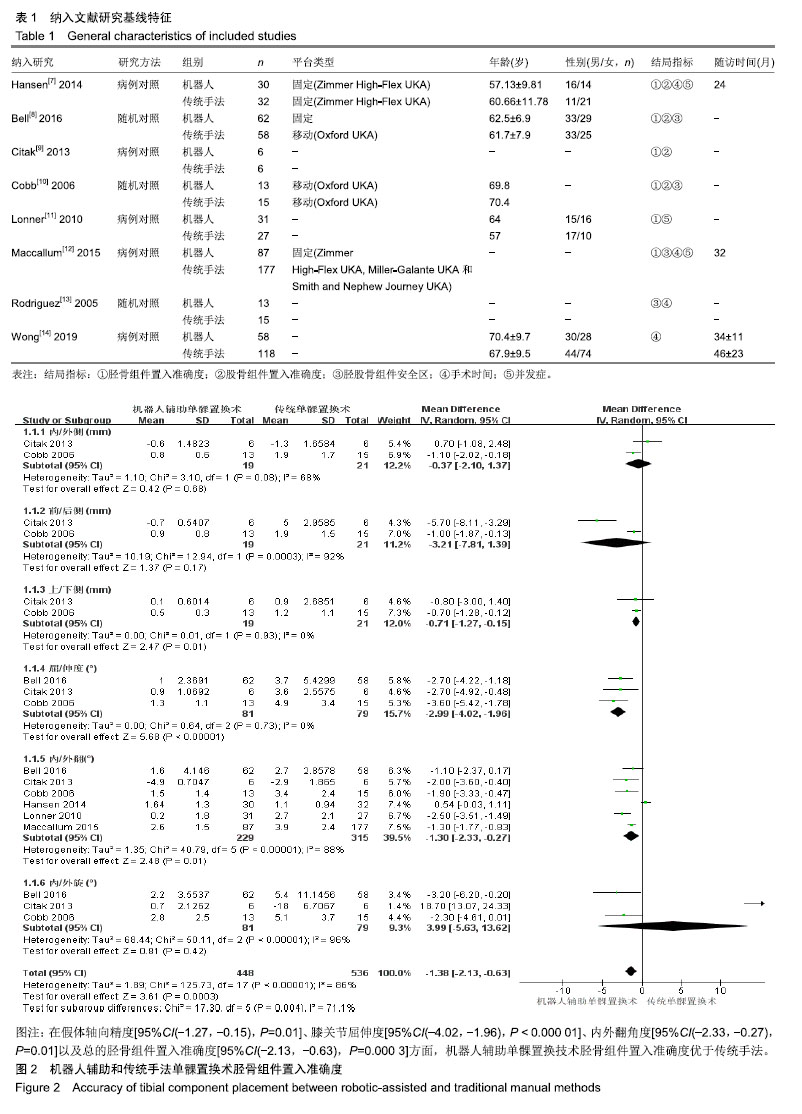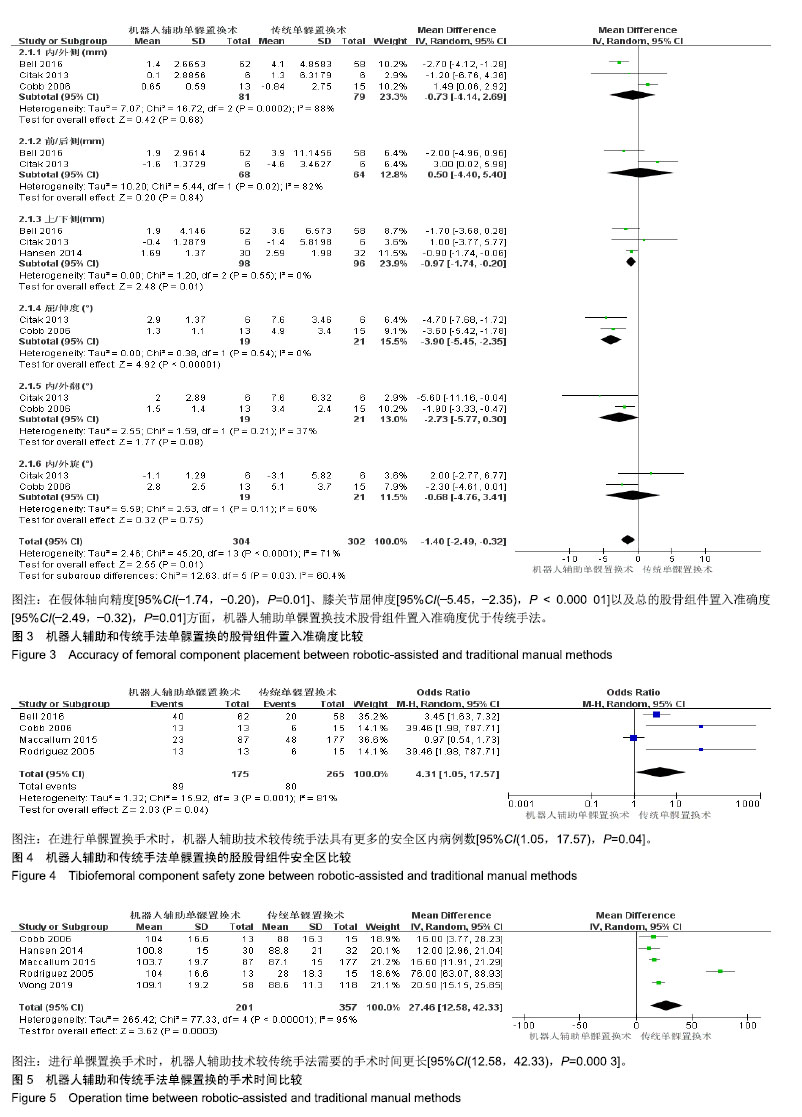| [1]Bolognesi MP, Greiner MA, Attarian DE, et al. Unicompartmental knee arthroplasty and total knee arthroplasty among Medicare beneficiaries, 2000 to 2009. J Bone Joint Surg Am. 2013;95(22):174-176.[2]Swank ML, Alkire M, Conditt M, et al. Technology and cost-effectiveness in knee arthroplasty: computer navigation and robotics. Am JOrthop (BelleMead, NJ). 2009; 38(2 Suppl): 32-36.[3]Liddle AD, Judge A, Pandit H, et al. Adverse outcomes after total and unicompartmental knee replacement in 101,330 matched patients: a study of data from the National Joint Registry for EnglandandWales. Lancet. 2014;384(9952): 1437-1445.[4]Labek G, Sekyra K, Pawelka W, et al. Outcome and reproducibility of data concerning the Oxford unicompartmental knee arthroplasty:a structured literature review including arthroplasty registry data. Acta Orthop. 2011;82(2):131-135.[5]Emerson RH Jr, Higgins LL. Unicompartmental knee arthroplasty with the oxford prosthesis in patients with medial compartment arthritis. J Bone Joint Surg Am. 2008;90(1): 118-122.[6]Eickmann TH, Collier MB, Sukezaki F, et al. Survival of medial unicondylar arthroplasties placed by one surgeon 1984. Clin Orthop Relat Res.2006;(452):143-149.[7]Hansen DC, Kusuma SK, Palmer RM, et al. Robotic guidance does not improve component position or short-term outcome in medial unicompartmental knee arthroplasty. J Arthroplasty. 2014;29(9):1784-1789.[8]Bell SW, Anthony I, Jones B, et al. Improved Accuracy of Component Positioning with Robotic-Assisted Unicompartmental Knee Arthroplasty: Data from a Prospective, Randomized Controlled Study. J Bone Joint Surg Am. 2016;98(8):627-635.[9]Citak M, Suero EM, Dunbar NJ, et al. Unicompartmental knee arthroplasty: is robotic technology more accurate than conventional technique? 2013;20(4):268-271.[10]Cobb J, Henckel J, Gomes P, et al. Hands-on robotic unicompartmental knee replacement: a prospective, randomised controlled study of the acrobot system. J Bone Joint Surg Br. 2006;88(2):188-197.[11]Lonner JH, John TK, Conditt MA. Robotic arm-assisted UKA improves tibial component alignment: a pilot study. Clin Orthop Relat Res. 2010;468(1):141-146.[12]MacCallum KP, Danoff JR, Geller JA. Tibial baseplate positioning in robotic-assisted and conventional unicompartmental knee arthroplasty. Eur J Orthop Surg Traumatol. 2016;26(1):93-98.[13]Rodriguez F, Harris S, Jakopec M, et al. Robotic clinical trials of uni-condylar arthroplasty. Int J Med Robot. 2005;1(4): 20-28.[14]Wong J, Murtaugh T, Lakra A, et al. Robotic-assisted unicompartmental knee replacement offers no early advantage over conventional unicompartmental knee replacement. Knee Surg Sports Traumatol Arthrosc. 2019.[15]Barbadoro P, Ensini A, Leardini A, et al. Tibial component alignment and risk of loosening in unicompartmental knee arthroplasty: a radiographicand radiostereometric study. Knee Surg Sports Traumatol Arthrosc. 2014;22(12):3157-3162.[16]Jenny JY, Boeri C. Unicompartmental knee prosthesis implantation with a non-image-based navigation system: rationale, technique, casecontrol comparative study with a conventional instrumented implantation. Knee Surg Sports Traumatol Arthrosc. 2003;11 (1):40-45.[17]Moreland JR. Mechanisms of failure in total knee arthroplasty. Clin Orthop Relat Res. 1998;226:49.[18]Mariani EM, Bourne MH, Jackson RT, et al. Early failure of unicompartmental knee arthroplasty. J Arthroplasty. 2007; 22(6 Suppl 2):81-84.[19]Matsen FA 3rd, Garbini JL, Sidles JA, et al. Robotic assistance in orthopaedic surgery. A proof of principle using distal femoral arthroplasty. Clin Orthop Relat Res.1993;296: 178-186.[20]Dunbar NJ, Roche MW, Park BH, et al. Accuracy of dynamic tactileguided unicompartmental knee arthroplasty. J Arthroplasty. 2012;27(5):803-808.[21]Mofidi A, Plate JF, Lu B, et al. Assessment of accuracyof roboticallyassisted unicompartmental arthroplasty. Knee Surg Sports Traumatol Arthrosc. 2014; 22(8):1918-1925.[22]Smith JR, Riches PE, Rowe PJ. Accuracy of a freehand sculpting tool for unicondylar knee replacement. Int J Med Robot. 2014;10(2):162-169.[23]Sinha RK. Outcomes of robotic arm-assisted unicompartmental knee arthroplasty. Am J Orthop (BelleMead, NJ). 2009;38(2 Suppl):20-22. |







